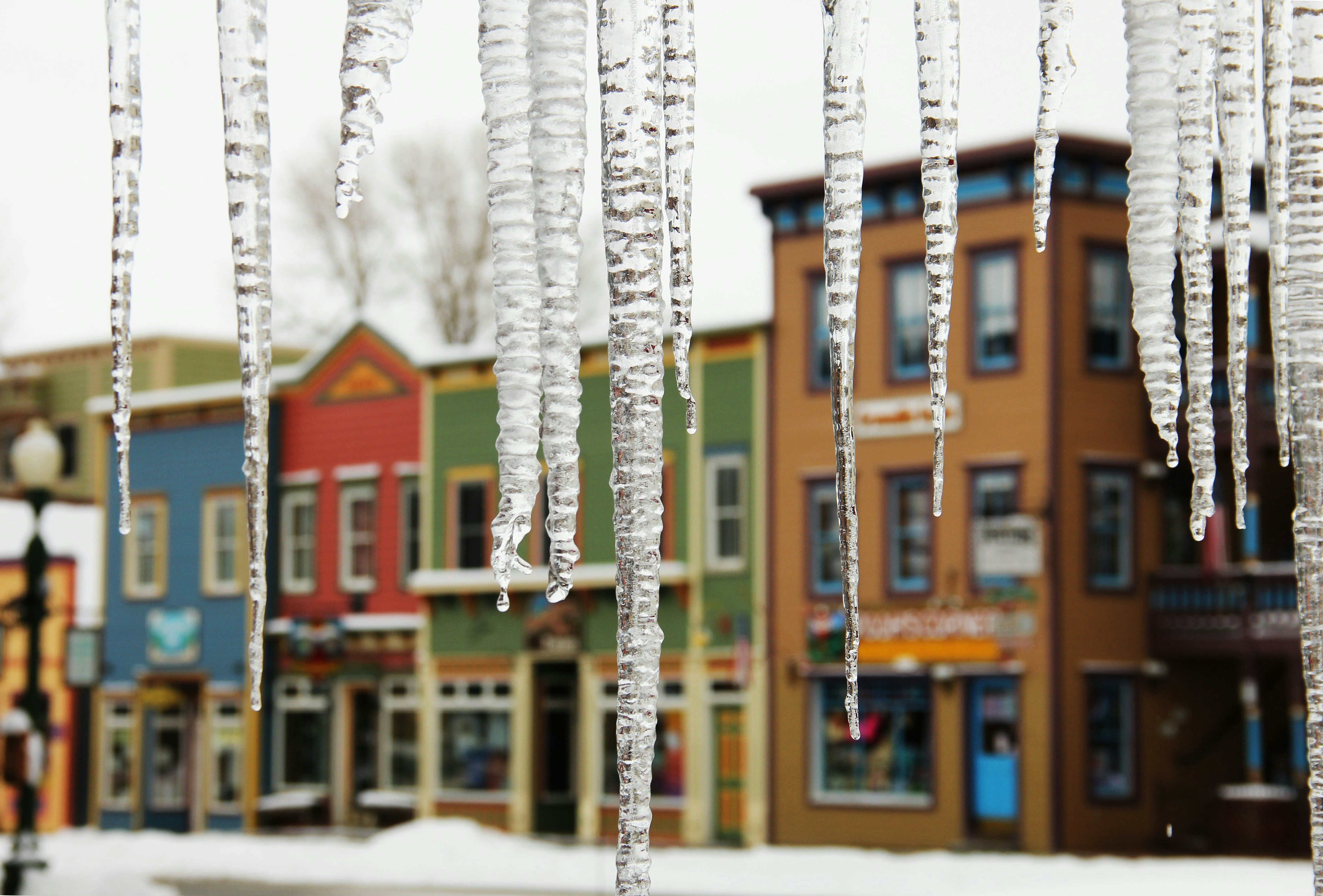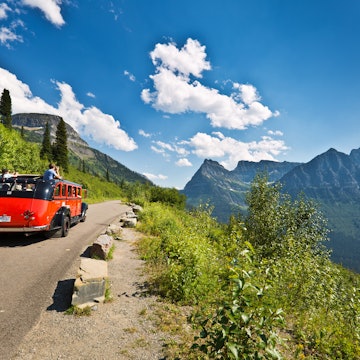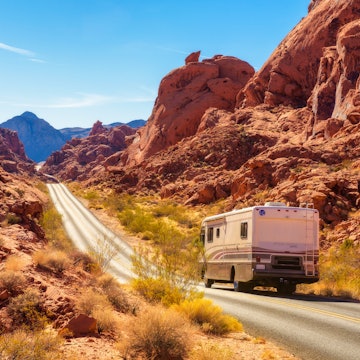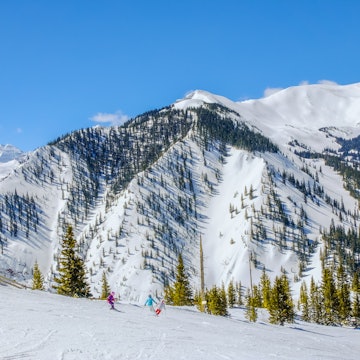

A starry night in Vail, Colorado. Cavan Images/Offset/Shutterstock
The combination of champagne powder, endless blue skies, mammoth mountains and a live-to-ski ethos makes skiing in Colorado the stuff of legend. From cruisers and tree runs to back bowls and terrain parks, Colorado is one of the USA's best and most varied places to ski.
With more than 30 resorts to choose from, this state really does have a mountain – and ski town – for everyone. Here are five of the very best.

1. Aspen
Vibes: Aspen is a historic mining town turned posh destination, with a heady, artsy vibe. Mountain chic boutiques and galleries line the quiet streets, while Aspen Mountain overlooks it all.
What to do when you’re not on the slopes: Snowshoe through the sublime White River National Forest with a guide from the Aspen Center for Environmental Studies. Or meander through the edgy Aspen Art Museum, with ever-changing exhibits and a spectacular rooftop cafe.
Where to rent equipment: Ski Butlers delivers high-end equipment directly to you. Boots uncomfortable? A tech will come switch your gear, even mountainside.
Where to eat: No place does après-ski better than Ajax Tavern, with its sunny mountainside patio and elevated pub grub. Pair a Wagyu double cheeseburger and truffle fries with some bubbly (BYO fur blanket).
Where to stay: Superb service and relaxed Western elegance are trademarks of the Hotel Jerome, an 1889 landmark built during Colorado’s silver heyday. Rooms are modern and plush, while the common areas burst with period antiques and cowboy art.
Pass and tickets: Aspen’s four resorts are on the Ikon Pass. Lift tickets also allow unlimited access to each for 184–279 US dollars (US$) per day.
How to get there: Aspen’s small airport offers direct flights to a few US cities. Alternatively, it’s 190 miles to Denver; Roaring Fork Express and Colorado Airport Express provide shuttle services from Denver International Airport, which is around a 4-hour drive.

2. Breckenridge
Vibes: Upbeat and down-to-earth, Breckenridge is nestled in a gorgeous mountain valley. Its jewel-box historic district is dotted with picturesque shops and restaurants in a range of budgets.
What to do when you’re not on the slopes: Lean into Breckenridge’s Arts District, Breck Create; catch a show or tour the public art, including a giant troll in the forest. Then meet some sweet huskies and learn all about mushing on a dogsledding tour.
Where to rent equipment: Family-run Blue River Sports provides friendly and knowledgeable service. Gear is high quality and well priced, with breakage insurance included.
Where to eat: Go all-in with the tasting menu at Rootstalk, seven courses of elevated comfort food, the brainchild of James Beard award-winning chef Matt Vawter.
Where to stay: The Bivvi is an unexpectedly upscale hostel in a big log cabin. Bright and cozy common spaces invite socializing; a firepit and a 10-person hot tub extend the options further. The homemade breakfast and free bus service to the resort are cherries on top.
Pass and tickets: Breckenridge is on the Epic Pass. For limited ski days, consider the Epic Day Pass (1–7 days for US$150–874) instead of a single-day lift ticket (US$289).
How to get there: Breckenridge is 80 miles from Denver, about a 90-minute drive. Epic Mountain Express and Peak 1 Express provide shuttle services, or take Snowstang, a seasonal public bus.

3. Vail
Vibes: Vail oozes mountain luxury, with a 1960s-built Bavarian-themed village complete with twinkling lights and cobblestone streets. Spend some time exploring the chichi restaurants, bars and boutiques.
What to do when you’re not on the slopes: Want more time outdoors? Try winter fly-fishing with Vail Valley Anglers.
Where to rent equipment: Known for high-end, nearly new equipment, Black Tie Ski Rentals brings your rentals (and a van full of alternatives) directly to you.
Where to eat: Nab a seat at the bar at Sweet Basil, a longtime local fave serving innovative American fare focused on locally sourced products. For a table, reserve a month ahead – no joke!
Where to stay: Swanky hotels dot the village, but for a true ski-in, ski-out stay, opt for the Lodge at Vail at the base of Gondola One.
Pass and tickets: Vail is on the Epic Pass. Only skiing a few days? Opt for the Epic Day Pass (1–7 days for US$150–874) instead of the hefty lift ticket (1 day for US$319).
How to get there: Eagle County Regional Airport is 35 miles west of Vail, with several domestic flights. Vail is a 2-hour drive from Denver. Bustang provides bus services, while Epic Mountain Express and Peak 1 Express run shuttles from Denver International Airport.

4. Crested Butte
Vibes: Quirky, laid-back Crested Butte (CB) is an end-of-road little town with one of Colorado’s largest historic districts. Colorful Victorian buildings line the main drag, home to breweries, boutiques and bike shops.
What to do when you’re not on the slopes: Do like the locals and hit CB’s biking trails in the gorgeous Gunnison Valley; fat tire rentals are available at Big Al’s Bicycle Heaven. Alternatively, give your legs a break and take a cozy sleigh ride with your boo, mittened hand in hand.
Where to rent equipment: Locally owned Crested Butte Sports is the go-to for high-quality gear, good prices and top-notch service.
Where to eat: Secret Stash is one of the hottest tickets in town – an award-winning pizzeria with a boho vibe and teahouse seating, including prayer flags.
Where to stay: CB is dotted in B&Bs and vacation rentals, many in historic buildings like Scarp Ridge Lodge. There are also loads of vacation rentals at the resort; search other short-term rental sites like Vrbo and Airbnb for the widest net.
Pass and tickets: CB is on the Epic Pass. For short ski trips, buy the Epic Day Pass (1–7 days for US$115–670); lift tickets are US$189 for 1 day.
How to get there: Gunnison-Crested Butte Regional Airport is 30 miles south of Crested Butte, with flights (mostly) to Denver. Otherwise, it’s about 4–5 hours to drive to Denver; Bustang runs bus services between the two, or hire Colorado Mountain Limo from Denver International Airport.

5. Keystone
Vibes: Keystone anchors a magical winter wonderland itinerary, with a luxury hotel, wicked terrain parks and a wide variety of snow activities. Spend time eating your way through River Run, or get lost under the stars in the Soda Creek Valley.
What to do when you’re not on the slopes: Spend the day at the world's largest mountaintop snow fort, which is full of sculptures and caves. In the evening, book a sleigh ride through the Soda Creek Valley for some stargazing, hearty food and cowboy cocktails.
Where to rent equipment: Keystone Sports is conveniently located in the middle of River Run, the main area where you'll grab the gondola, eat and take the shuttle. This makes it easy to pick up, drop off or get a quick tune-up.
Where to eat: Head to Ski Tip Lodge for a cozy fireside meal. The rotating four-course dinner menu comes with an impressive wine list and excellent service.
Where to stay: In 2025, Kindred Resort opened as Keystone's first luxury ski-in, ski-out hotel. You can also book accomodations at the Forest Condos or Lakeside Village Condos.
Pass and tickets: Keystone is on the Epic Pass. For short ski trips, buy the Epic Day Pass (1–7 days for US$115–670); lift tickets are US$189 for 1 day.
How to get there: To get to Keystone, you can fly into Denver International Airport. From there, you can take Epic Mountain Express or hire a private shuttle for the 2-hour drive.
Things to know before you ski in Colorado
Skiing at altitude is no joke, especially in Colorado, where most resorts sit between 9000 and 13,000ft. If possible, give yourself a day or two to acclimate before hitting the slopes, then take it slow and drink lots of water. If you experience severe nausea, headache or dizziness, consult a doctor or head down to a lower altitude.
For the best ski conditions, head to the hills between January and March, when the snow is fresh, grippy and deep, and the mountains are fully open.
If you're on a budget, skiing early or late in the season (before December 15 and after April 1) often means deals on day passes and lodging but also potentially patchy snow and a limited number of skiable trails.
On the mountain, skiers below you have the right of way – remember, they can’t see you, so give them space. Exception: if you’re merging onto a run, look uphill to avoid cutting someone off.
Don’t duck ropes! They’re there to keep skiers safe from avalanche risk and exposed or dangerous terrain, and to prevent people from being stranded with no way of getting back to a lift.
Traffic on I-70 can be bumper-to-bumper, especially on winter weekends. Leave early to make the best time; check COtrip for real-time road conditions.
















